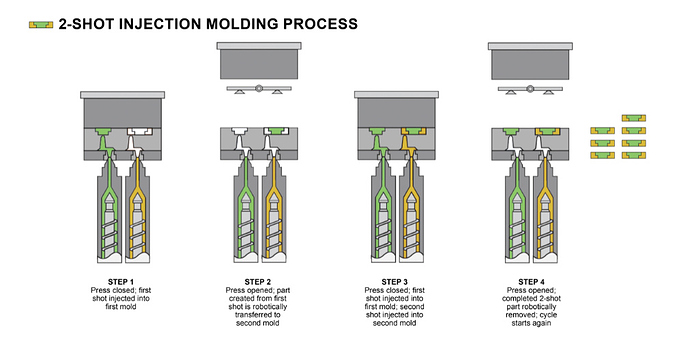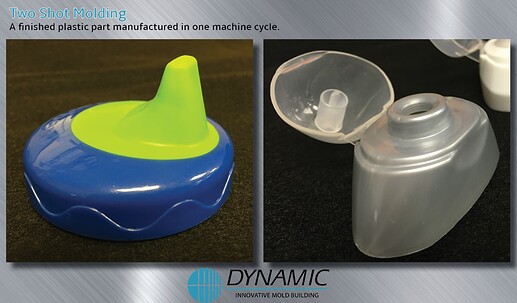Two-shot injection molding is a molding process in which two different thermoplastics can be molded together in one cycle as shown in the image above.
It’s a sub-variation of traditional injection molding. As described from this website:
“There are two phases of the two-shot molding process. The first is similar to traditional injection molding: A shot of resin is injected into a mold and cooled to form a solid part. In the second phase, the just-molded part is transferred to a second mold via a rotating platen or a robotic arm, and receives the second shot of resin – in, through or around certain parts of the first molded part, depending on the design. The two plastic resins then form a molecular bond and the multi-resin molded part is cooled and ejected.”
Double-shot injection molding is ideal for:
- High-volume applications
- Lower unit cost.
- Reduced cost and waste associated with assembly defects.
- Enhanced product quality.
Two-shot injection molding at first glance is quite similar to over-molding, the key difference lays in that this is a single machine cycle, while over-molding requires additional secondary operations.
An example part can be visualized here:
Reference: Two Shot & Multi Shot Injection Molding | Gemini Group
Useful reference guide from Protolabs explaining the different ways to achieve two-material molding:

